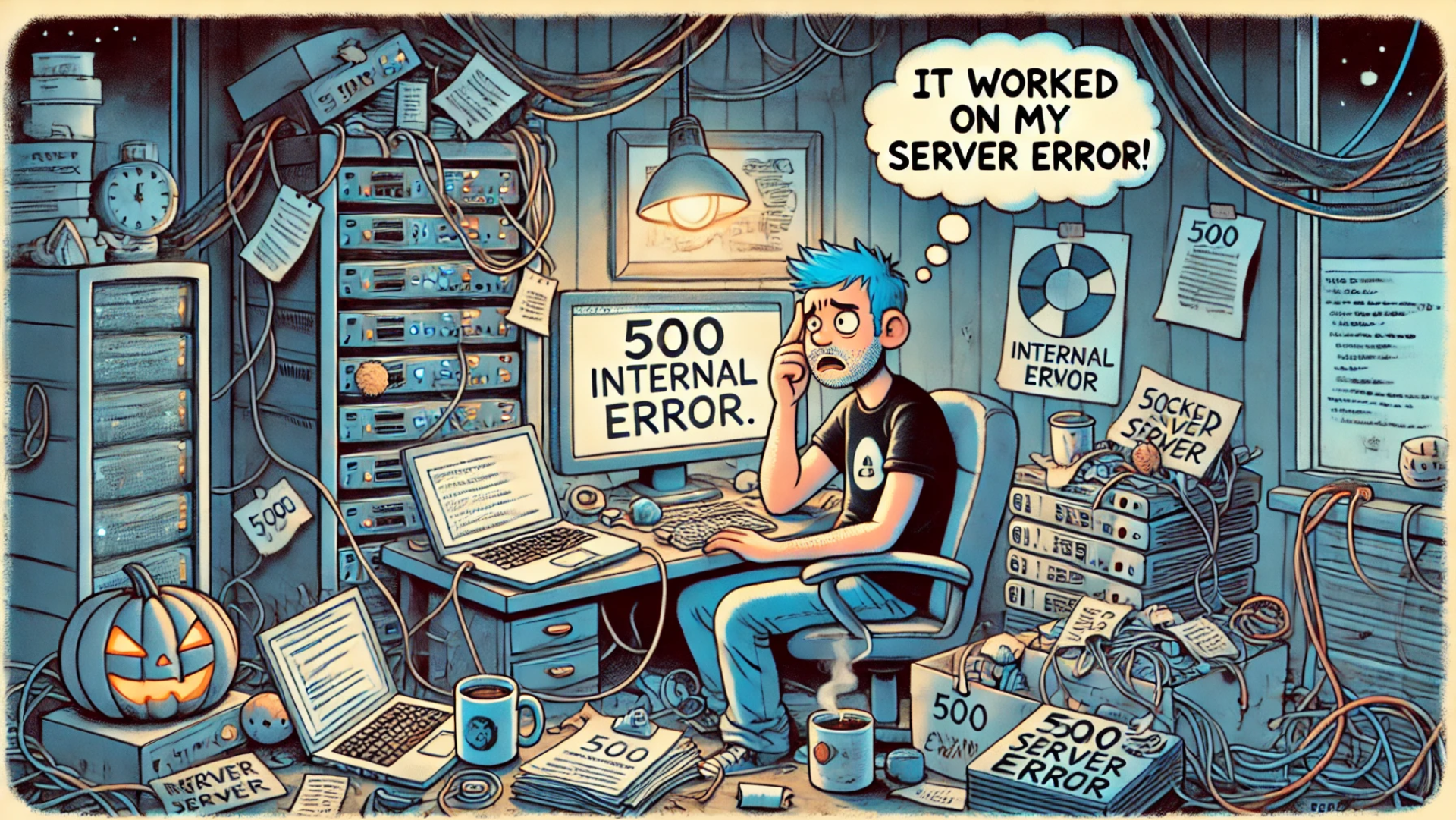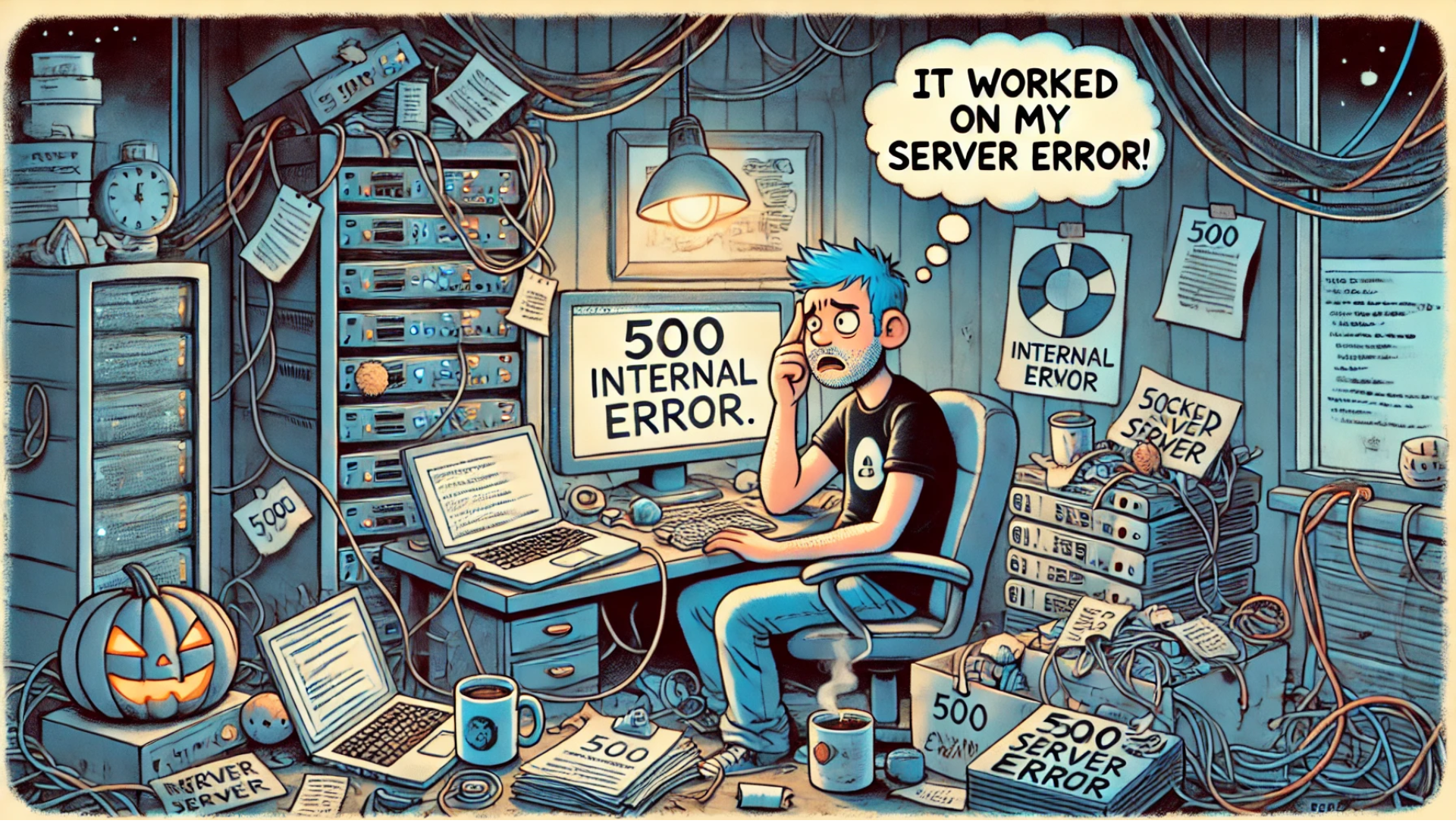

Backend Development: The Silent Art of Making Things Work (Without Anyone Noticing)
Backend development is like the secret sauce of the web. Users don’t really know what’s going on in the back end, and they don’t care as long as things work. It’s the ultimate unsung job—where you’re a wizard behind the curtain making the magic happen, but no one knows your name.
In this post, we’re going to explore the glorious and sometimes confusing world of backend development. Get ready for a journey filled with cryptic error messages, database quirks, and the never-ending quest to make everything work—just in time for the demo.
1. The Database Struggles: When Tables Become Tables of Woe
A backend developer’s relationship with databases is complicated, to say the least. You start with a simple, elegant database schema, and before you know it, it’s a mess of foreign keys, null values, and relational constraints that no one thought to document.
At the beginning, it’s all smooth sailing. You design your first database with the precision of an architect. You normalize your tables like it’s an art form. You look at the relationships and think, “This is easy. I’ve got this.”
But then comes that first real project where you need to scale. And suddenly, your once-perfectly normalized database starts looking like a closet full of random stuff. Someone asks you to add a new feature, and you find yourself having to merge two tables that were never meant to be merged. You throw in a couple of indexes for “optimization,” and before you know it, the database starts responding slower than a dial-up connection.
And don’t get me started on migrations. You think you’ve handled all of them, but somewhere between dev and production, the schema changes just a little bit, and suddenly, your app is a 404 waiting to happen. You fix the issue, of course, but you also spend the next three hours questioning your life choices.
2. APIs: The Lifeblood of Your App (And Also the Source of Your Pain)
APIs are supposed to be the smooth communication channels between different parts of your app. You write your code, you add your routes, and voilà! You send data to and from your app like a well-oiled machine. Except when it doesn’t work.
You start by writing your beautiful, RESTful API. Your documentation is pristine, your endpoints well-structured. You even threw in some validation to make sure only the best and brightest data gets in. You feel like you’re on top of the world.
But then... production hits. Users are entering data that’s technically valid, but not quite the data you expected. Suddenly, your “perfect” API starts acting like it’s been hit with a sledgehammer. The frontend team calls you up, “Hey, the API’s broken!” And you calmly say, “It’s not broken, it’s just... misunderstood.”
And when things start breaking, it’s always when you least expect it. A simple GET request goes wrong. A POST request doesn’t return the right response. Some mystery parameter that no one documented seems to be required now, and suddenly, it’s all your fault.
If there’s one thing you learn about APIs, it’s that they work flawlessly… until they don’t.
3. Error Messages: You Shall Not Pass (Without Some Serious Head-Scratching)
Backend developers are practically married to error messages. If you’re not reading error logs, are you even backend developing? The best part? Sometimes the logs make absolutely no sense.
When something breaks, you don’t get a friendly “Oops, there was an issue!” message. Instead, you get a cryptic string of text that looks like it was written by an ancient civilization. “Segmentation fault” sounds like something that could happen to a robot, not your API. “Internal Server Error” is another one that’s both vague and terrifying. It’s the coding equivalent of "I have no idea what happened, but I’m definitely not taking responsibility."
And don’t even think about relying on Stack Overflow answers—at least not for peace of mind. You’ll find answers like, “Just rewrite everything and hope for the best.” That’s not helpful. Yet, somehow, rewriting the entire thing does sometimes fix the issue.
The best moment, however, comes when you discover that the error was caused by something so simple, so minor, that you wonder why you even bothered to debug it. Spoiler: It was a missing semicolon. Or maybe you didn’t capitalize a variable correctly. How’s that for humility?
4. Server Configuration: The Dark Art of Making Sure the Lights Stay On
Backend developers aren’t just coding—they’re also part-time server administrators. Setting up a server is a delicate art. You can’t just throw a bunch of files at it and hope it works. Oh no.
You’ve got to configure Nginx (or Apache, or whatever your server of choice is), optimize the performance, set up SSL certificates, and ensure that it’s secure. Security! The word that sends chills down your spine because you know there are 8,000 ways your server can be compromised. And every time you deploy something new, you wonder: Did I forget something? Is this server secretly plotting against me?
You spent hours carefully setting up your config files, only to realize, upon deployment, that the server has decided to 502 you for no reason at all. You go through your Nginx config like it’s a detective novel, line by line, waiting for that moment when it clicks. Oh, right! You missed a semicolon. Or maybe the port number changed without anyone telling you. Now, you’re back at square one.
There’s also the occasional “it works on my machine” syndrome, which leads you to wonder if your local environment is secretly more powerful than your production environment.
5. Debugging: The Endless Search for the Source of the Bug That Will Never Be Found
Backend development and debugging go hand in hand. It’s like trying to find a needle in a haystack, except the haystack is constantly changing and the needle is moving.
The first thing you do when a bug shows up is check the logs. Great, there’s a giant stack trace with a bunch of numbers you don’t understand and no context. You tell yourself, “It’s fine, I’ll just google it.” And so begins your deep dive into Stack Overflow.
You’ll find solutions that work sometimes. Other times, you’re left trying to make sense of solutions from 2010 that involve installing ancient libraries that have long since been deprecated. You feel like a detective solving a mystery, but the twist is that the criminal is your own code. And they’re a master of disguise.
Eventually, after hours of searching and pulling your hair out, you finally discover that the bug was caused by a simple typo. Of course it was.
6. Deployment: The Final Frontier (of Stress)
Ah, deployment. The moment of truth. After days or even weeks of coding, it’s time to deploy your work to the big, bad world.
The first time you deploy, it’s exciting. You hit the deploy button, and wait. Did it work? Is the server alive? The nerves are real.
But once you’ve deployed a few times, it becomes clear: deployments are stressful. There’s always a 5% chance that something will break, and that 5% always happens on Friday afternoon right before the weekend. The worst part? No one really cares that the backend is the reason everything’s working. They just want to know why the thing doesn’t work now.
You’ve deployed, and you’re watching the logs like a hawk. Did the database connect? Are the requests coming through? Is the API vomiting errors?
And then, after you deploy the fix and it works (finally!), you realize the real satisfaction of backend development: It may not get applause, but at least it doesn’t get a million bug reports.